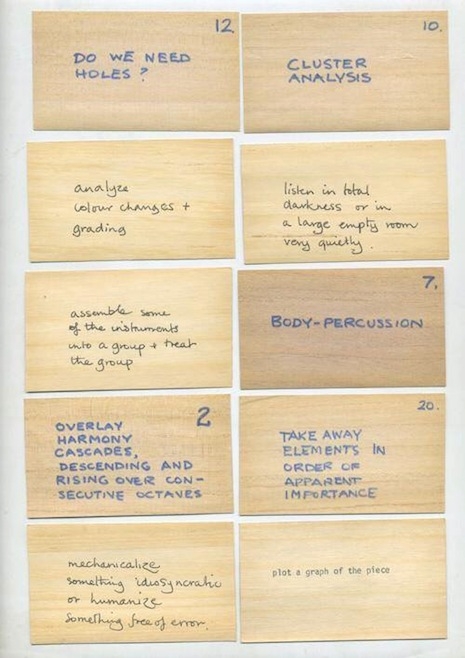


Some other related concepts to the Oblique Strategies were the Fluxus movement’s fanciful and inventive “Fluxkits” and Fluxus boxes-one particularly inspired example of these boxes, by George Brecht, was called the “water yam” box. The most clear antecedent to the Oblique Strategies cards was John Cage’s adoption of the ancient Chinese divination system, the I Ching, to make musical decisions. “The Oblique Strategies evolved from me being in a number of working situations when the panic of the situation-particularly in studios-tended to make me quickly forget that there were others ways of working, and that there were tangential ways of attacking problems that were in many senses more interesting than the direct head-on approach,” explained Eno in an interview with Charles Amirkhanian in 1980. It’s also the first Eno album that gives an explicit credit to the Oblique Strategies cards on the back cover sleeve.Įno and his artist friend Peter Schmidt released the Oblique Strategies cards in 1975, when they realized that they had both been independently developing sets of ideas to help themselves come up with creative solutions to trying situations. "Another Green World" is the first Eno record which credits “Brian Eno,” not the otherworldly, vaporous “Eno’’ he had been referred to on previous records. Reprinted with permission from Bloomsbury Publishing. Excerpted from " Brian Eno's Another Green World" by Geeta Dayal (Continuum, 2009).


 0 kommentar(er)
0 kommentar(er)
